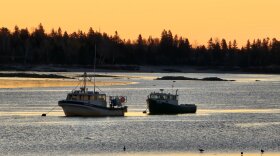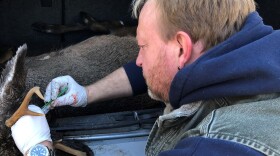The next decade is a critical time for the planet. Scientists say there will need to be a rapid, transformational shift away from fossil fuels to renewable energy to keep global warming to 1.5 degrees Celsius. That's the threshold that avoids the most catastrophic effects of climate change. Can the world meet the challenge? And what are we, all of us, prepared to do about it?

To protect life as we know it, we'll need to be climate driven — and that's the name of the ambitious project our newsroom tackled for 18 months.
The focus was on climate change in Maine, one county at a time. That meant taking a deep dive into the effects of climate change on diverse regions of the state — the coast, the western mountains, the North Woods, Down East — and reporting not only what the science tells us but what communities, businesses and individuals are doing (or not) to prepare for the future that's unfolding.
The Climate Driven series was made possible through the support of Maine Public members across Maine and by Evergreen Home Performance, Lee Auto Mall, Casella Waste Systems, Maine Coast Sea Vegetables, and the Maine Community Foundation.
Loading...
(Click to view stories we have reported in each county.)
-
Maine forests already absorb about 70% of the state's annual fossil fuel emissions. Now, a new study shows that Maine's commercial forest landowners could increase annual carbon storage by at least 20% over the next 60 years while maintaining timber harvest levels.
-
High tides are now occurring as often as 18 times a year, typically in late fall and early winter, and late spring and early summer. They are quickly becoming more common as climate change causes sea levels to rise.
-
The Maine Department of Marine Resources has hired Meredith White to lead the Nearshore Marine Resources Program, which was formally known as the Shellfish Management Program. The program will support communities and shellfish harvesters as they confront climate change in Maine waters.











































































